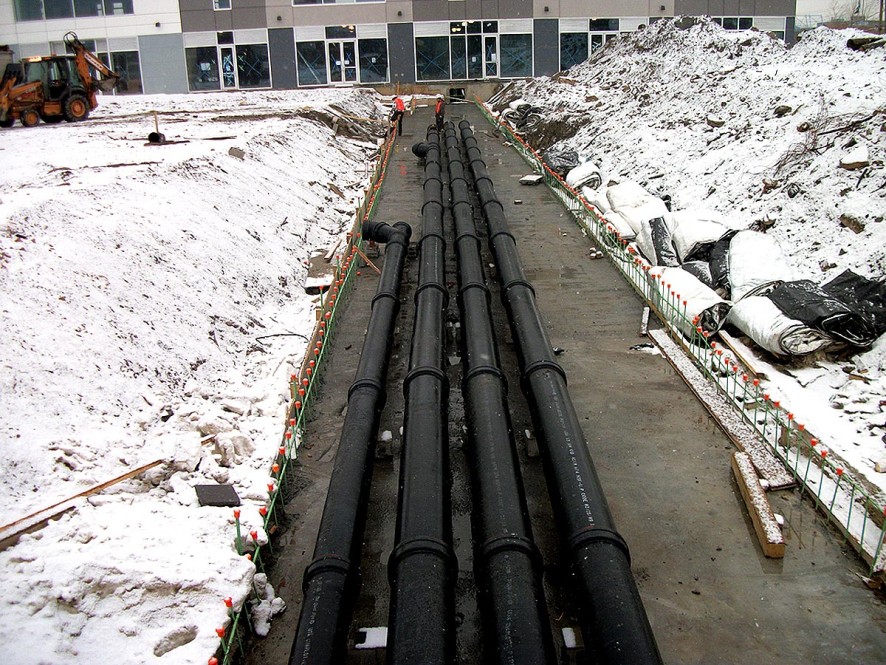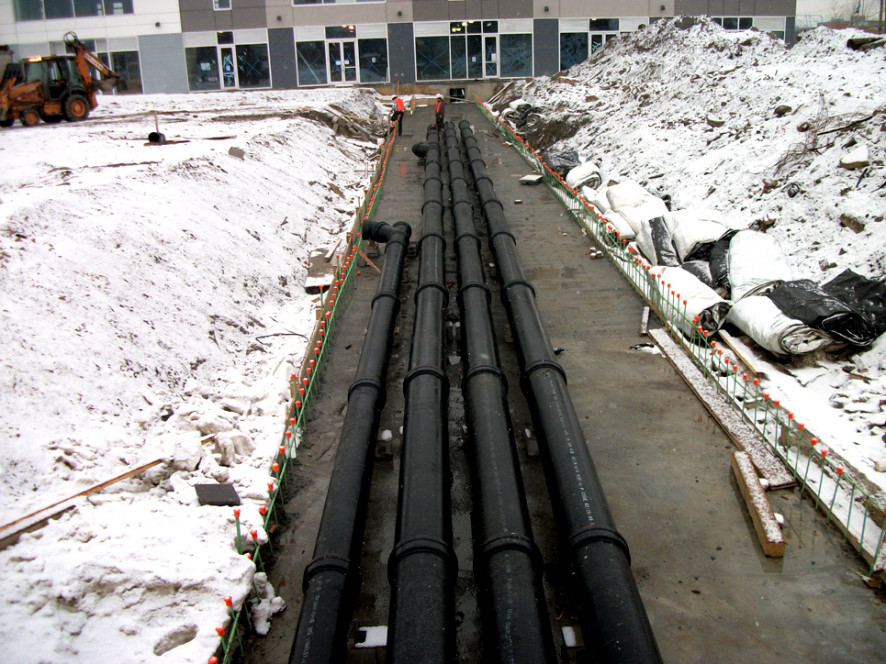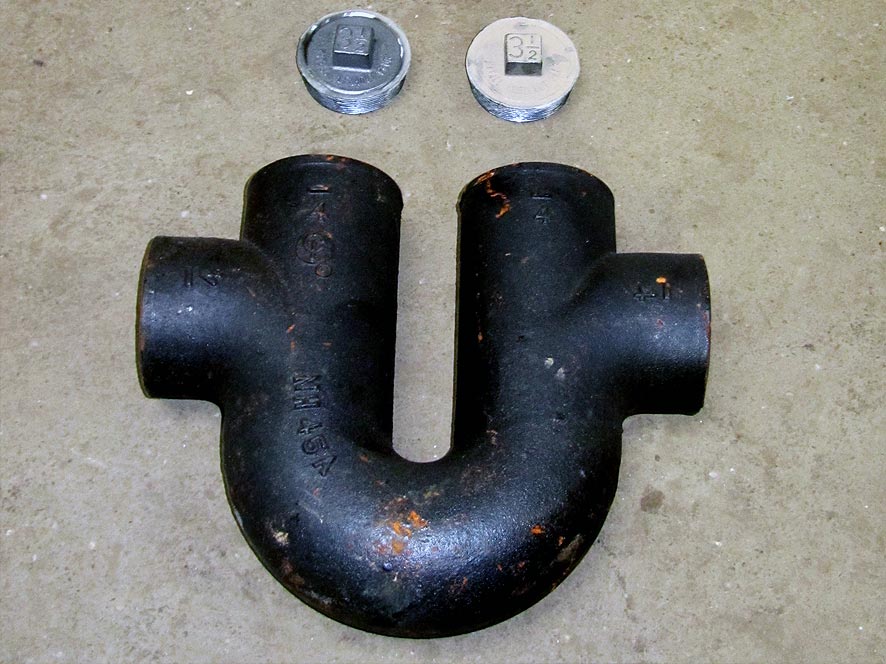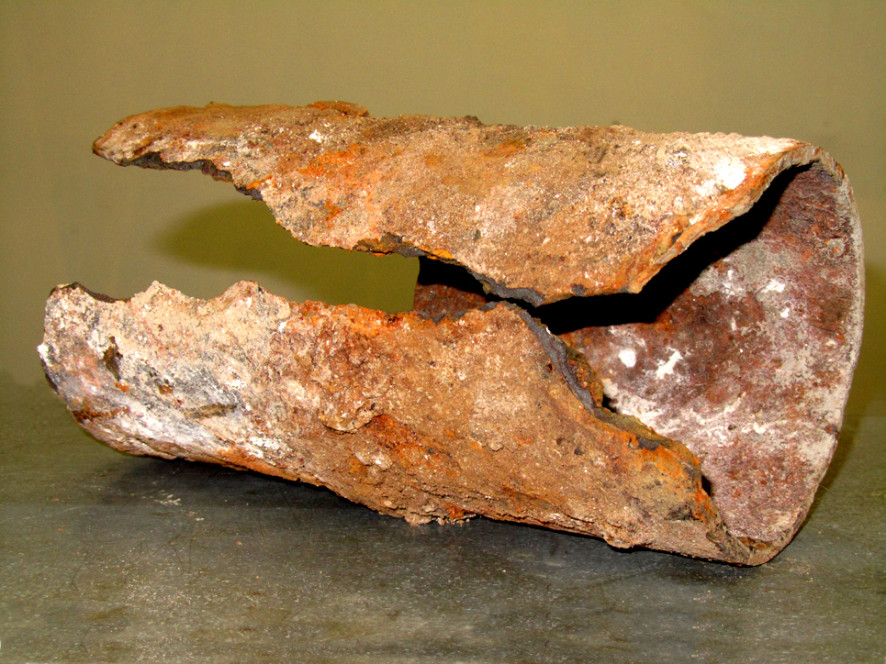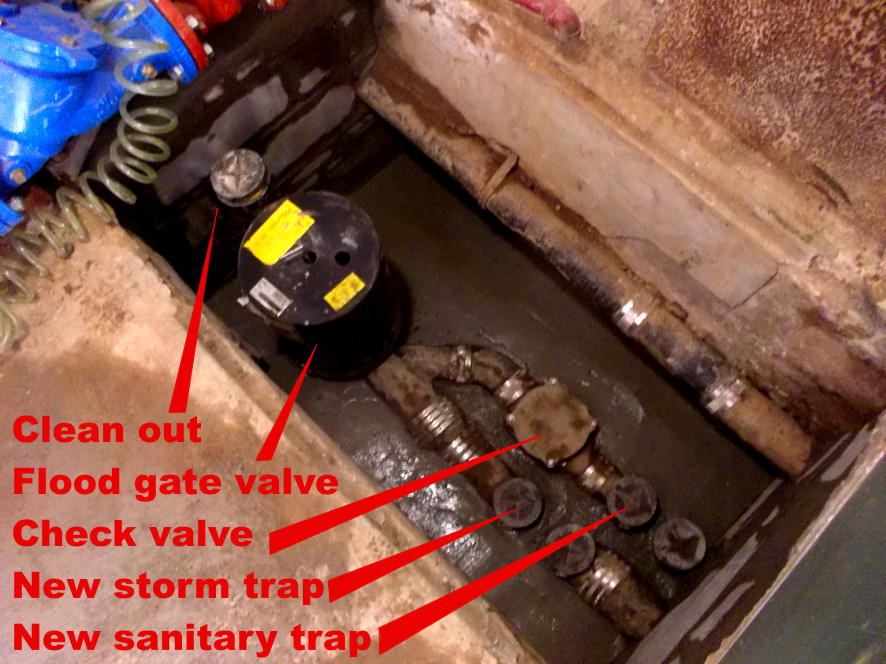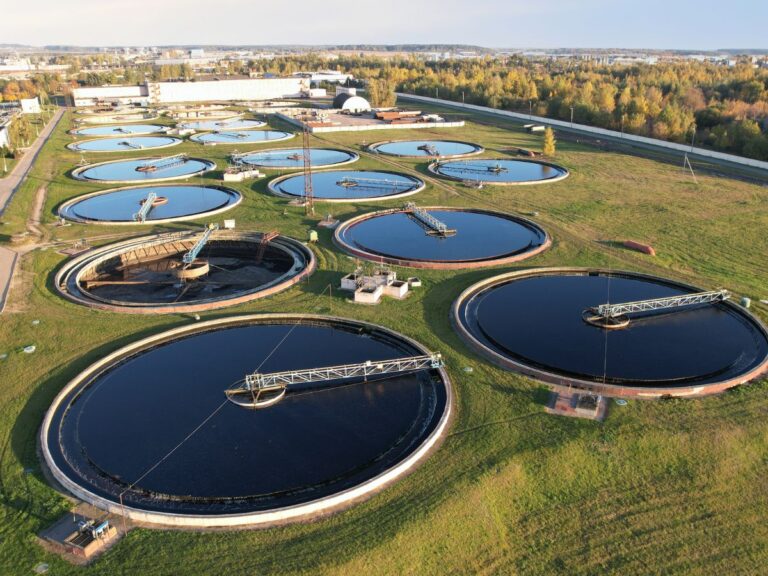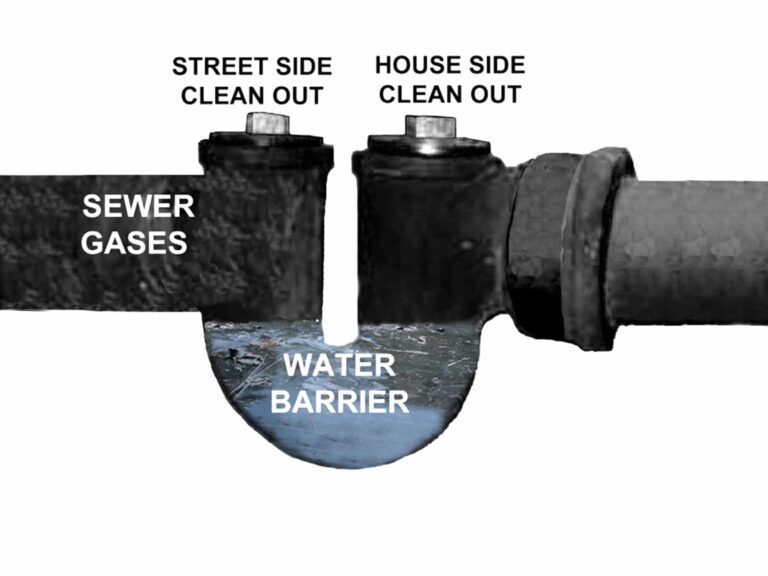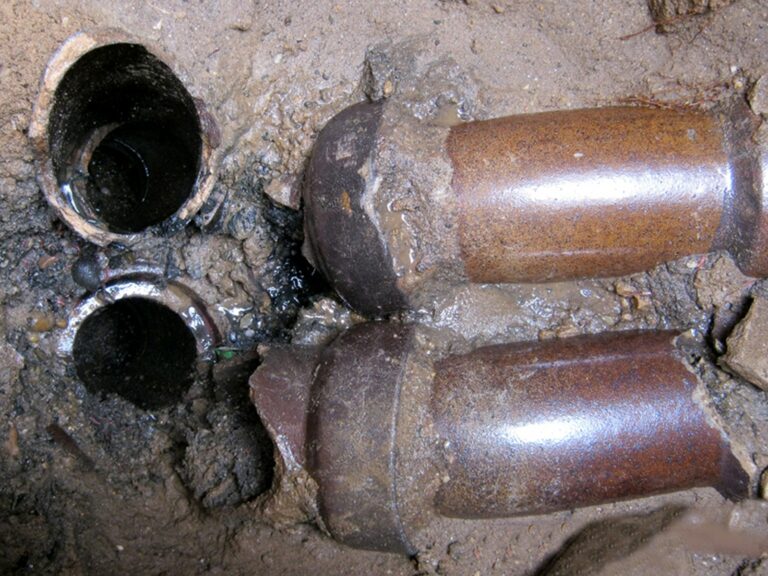A home sewer system is referred to in the plumbing trade as a house sewer. A house drain is a different system than a home sewer; a house sewer is located outside the house. A house drain refers to the main lateral drain line inside the building that is typically under the basement floor. In some cases it is hung above the basement floor alongside a wall. In New York City a home sewer system technically starts 5′ out from the outside front wall of the building.
Home sewer system materials
In different parts of the country different types and sizes of drain line pipe are used for a home sewer system. In New York City extra heavy cast iron pipe is used as the primary material for sewer lines. In many instances pvc is permitted as a material for a home sewer, but it is not widely used. In some cases where there is a highly acidic or alkaline condition pvc drain pipe of vitrified clay pipe may be preferable to extra heavy cast iron.
Vitrified clay drain pipe and pvc drain pipe are impervious to many chemicals and waste water conditions.
How a home sewer system functions
Almost any home sewer system works on the principal of gravity. The fact that water flows downhill permits waste water to drain off without the use of any mechanical devices. As a matter of fact forced main sewer lines are not permitted unless special permission is received.
The slope of the sewer pipe is also called the pitch of the pipe. An easy to understand formula to calculate pitch is 1″ every 5′ of sewer run. When enough pitch is available a house sewer system can be installed with as much as 1′ of pitch for every 4′ of run of sewer pipe
Also vital to a house sewer functioning properly is a house trap. In NYC a double vent house trap is required on the end of the house drain and before the start of the home sewer system. A double vent house trap serves two major purposes. Firstly is creates water barrier by holding water in its bottom. This water barrier prevents sewer gases from entering a building from the public sewer. Secondly a double vent house trap catches debris or harmful materials before they can cause a stoppage in the home sewer line. If sediment or debris causes a blockage in a home sewer system, it is much easier to clear a trap stoppage than a main line stoppage.
Typical home sewer problems
A house sewer can encounter many problems. However most house sewer lines function trouble-free for decades and need no maintenance whatsoever. However when sewer problems to occur on a home sewer system they can be confusing for the typical property owner. Problems can be misdiagnosed and more importantly incorrect advice given on how to correct the defect.
Many times a homeowner feels at the mercy of a contractor and simply ‘gives in’ to get work started to solve the problem. There are three basic defects that make a sewer line repair necessary, and it should be most helpful to understand each one and the proper course of action.
The three main type of problems owners encounter with their drain lines are:
- Roots in a sewer line
- Crushed or disconnected pipe
- Back pitched house drain piping
There are other problems that can be encountered of course. Even a house sewer in proper working order can be abused to the point it backs up. Disposing of improper items down a drain will surely result in a problem. Another common problem is grease stoppages. Grease stoppages can be caused by actual grease, or excessive soap scum build-up in a drain. [Read more about house drain line problems]
Different types of home sewer systems
Many people do not realize that there are three separate and distinct types of house sewer lines. Everyone knows that a sewer is meant to remove sanitary waste water from a building and dispose of it in a public sewer system. But a dedicated sanitary sewer is just one of three different types of home sewers.
The other two types of house sewer lines are a combined sewer, which takes both sanitary and storm flow, and a dedicated storm sewer. A storm sewer refers to a sewer that strictly carries rain water run-off from roof leaders, area drains, or detention tanks. All three different types of sewer lines must be installed according to the same NYC DEP rules and regulations. The only minor change is that only a single vent house trap is required on a storm sewer line.

